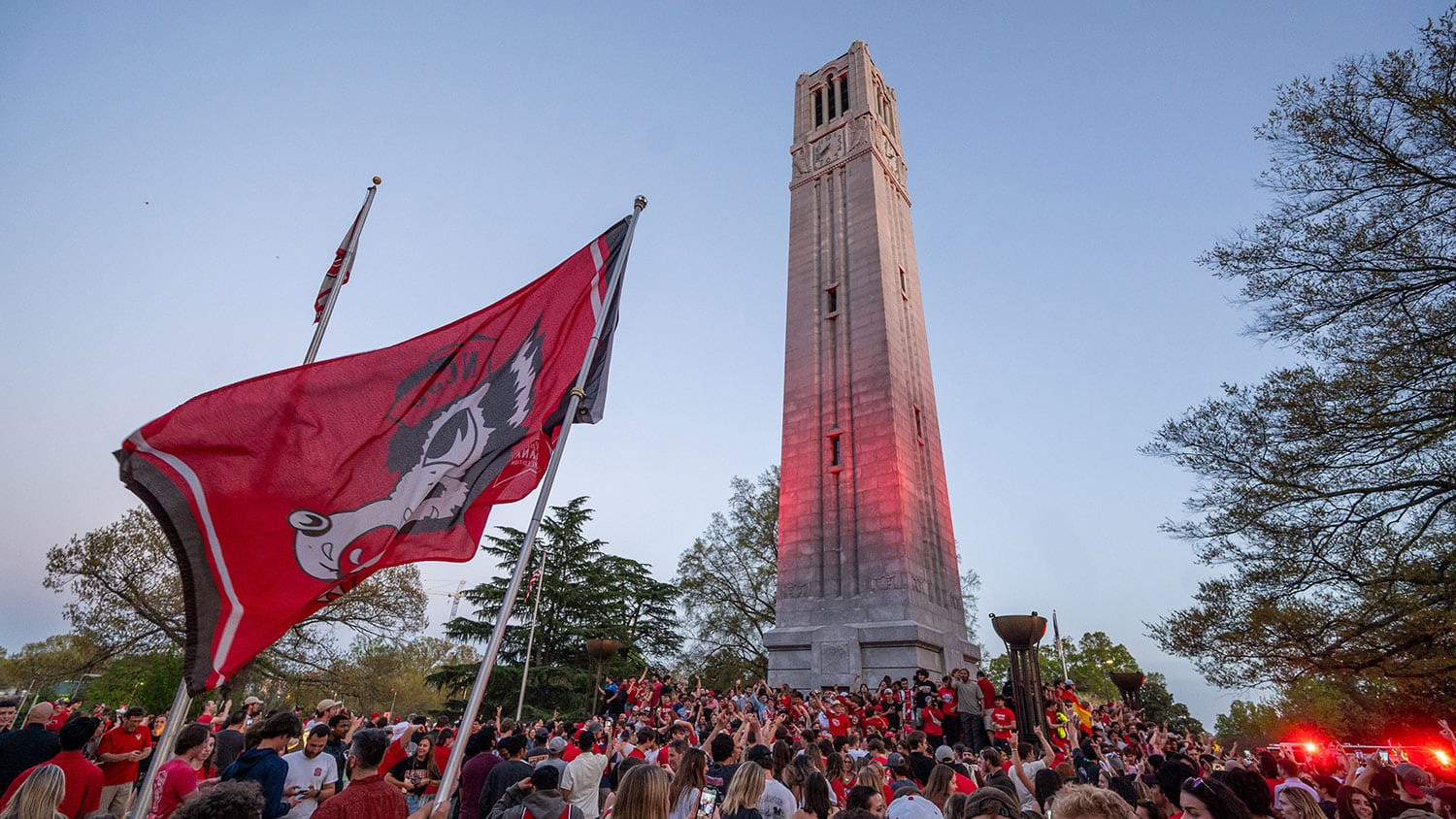Chancellor on Academic Science Programs
To the NC State community:
As a result of the strategic realignment recommendations I accepted just over a year ago, the provost formed the Academic Science Program Task Force in May 2011. The task force, made up of faculty representing all 10 colleges, the Graduate School and the Division of Undergraduate Academic Programs, conducted a careful review of the administrative structures for academic science programs at NC State, particularly in the Colleges of Agriculture and Life Sciences (CALS), Natural Resources (CNR) and Physical and Mathematical Sciences (PAMS).
The task force was challenged with determining the best ways to enhance the natural synergies between the science programs at NC State and promoting interdisciplinary collaboration and research while reducing administrative overhead. A final report was submitted to the provost mid-March and then distributed for campuswide input.
Following a review of the task force report and additional campus feedback, Provost Arden delivered his recommendations to me on April 16, and I have accepted the recommendations. These resulting positive changes are a good step forward for NC State but will take time to put in place, and will require appointment of a steering team and implementation teams to initiate the process. The key points follow. However, I encourage you to read the provost’s recommendations (PDF) as well as to reread the task force report (PDF) for additional background and information.
- The College of Physical and Mathematical Sciences will be transitioned to a broader, more comprehensive College of Sciences. This college will include the physical/chemical sciences, the mathematical and statistical sciences, earth system sciences and the biological sciences. As part of this realignment, the undergraduate biology program will move from CALS to the new College of Sciences. The college will be positioned to provide much of the core of undergraduate instruction in these disciplines while building on NC State’s growing expertise and reputation in the quantitative biological sciences and the national trend in convergence science.
- The College of Agriculture and Life Sciences and the College of Natural Resources will remain separate colleges. Dean searches for these colleges are well under way.
- The development of cross-college horizontal structures (recommended by the task force) holds significant long-term potential to enhance interdisciplinary scholarship across campus. However, creation of these horizontal structures will be further investigated and appraised.
The most significant decision is clearly the creation of a College of Sciences that meets NC State’s institutional responsibility to provide efficient, flexible and dynamic academic structures that continue to support historic mandates while encouraging natural synergies between faculty and disciplines, including the corresponding move of the undergraduate biology program. Understanding that such a move requires careful coordination of people and resources, movement of faculty will be evaluated on an individual basis.
As the provost noted in his recommendations, any changes or movements of faculty will be accompanied by appropriate funding. Additionally, CALS will retain its name and maintain the life sciences disciplines and programs that best support its important mission and focus areas.
The new College of Sciences will be instituted July 1, 2013. Dr. Dan Solomon, dean of PAMS, will serve as the inaugural dean of the new college. Moving forward, the provost will appoint a College of Sciences Steering Team charged with recommending the most appropriate administrative structure for the new college and a process for identifying which faculty will move. The steering team will be comprised of deans or representatives from the colleges of Agriculture and Life Sciences, Physical and Mathematical Sciences, Natural Resources, Engineering, Textiles, and Veterinary Medicine. The team will be asked to submit its report by the end of the 2012 fall semester. Additionally, implementation teams focused on budget, human resources, space and development issues critical to this realignment will be formed and managed by the provost’s office.
This strategic move brings NC State in line with national best practices, aligning related science departments in one college and allowing enhanced interdisciplinary educational opportunities, improved research collaboration and more efficient support operations. Some of the most pressing scientific issues of our day lie at the intersection of the mathematical, computational, physical and biological sciences. Bringing these disciplines together under a single organizational umbrella is a transformative change that better positions NC State to advance these issues through multidisciplinary research, teaching and service.
This change also demonstrates NC State’s longstanding commitment to agriculture and the life sciences and will allow us to align our resources to meet the critical needs of the state and nation. Agriculture is a multibillion industry for North Carolina, and NC State will continue to be the leader in driving and supporting the state’s agricultural productivity. Additionally, faculty and students in several related life sciences fields will continue to thrive as part of CALS. At a time when food production, safety and related issues will only become increasingly important, this decision provides CALS the opportunity to focus on its core mission and become an increasingly relevant leader in vital areas of study.
The realignment positions the university to best meet the needs of its students, industry and society now and well into the future. There certainly will be much to keep you informed about in the months to come; please check the strategic planning website for updated information.
Thank you for your ongoing commitment and dedication to NC State.
- Categories:


